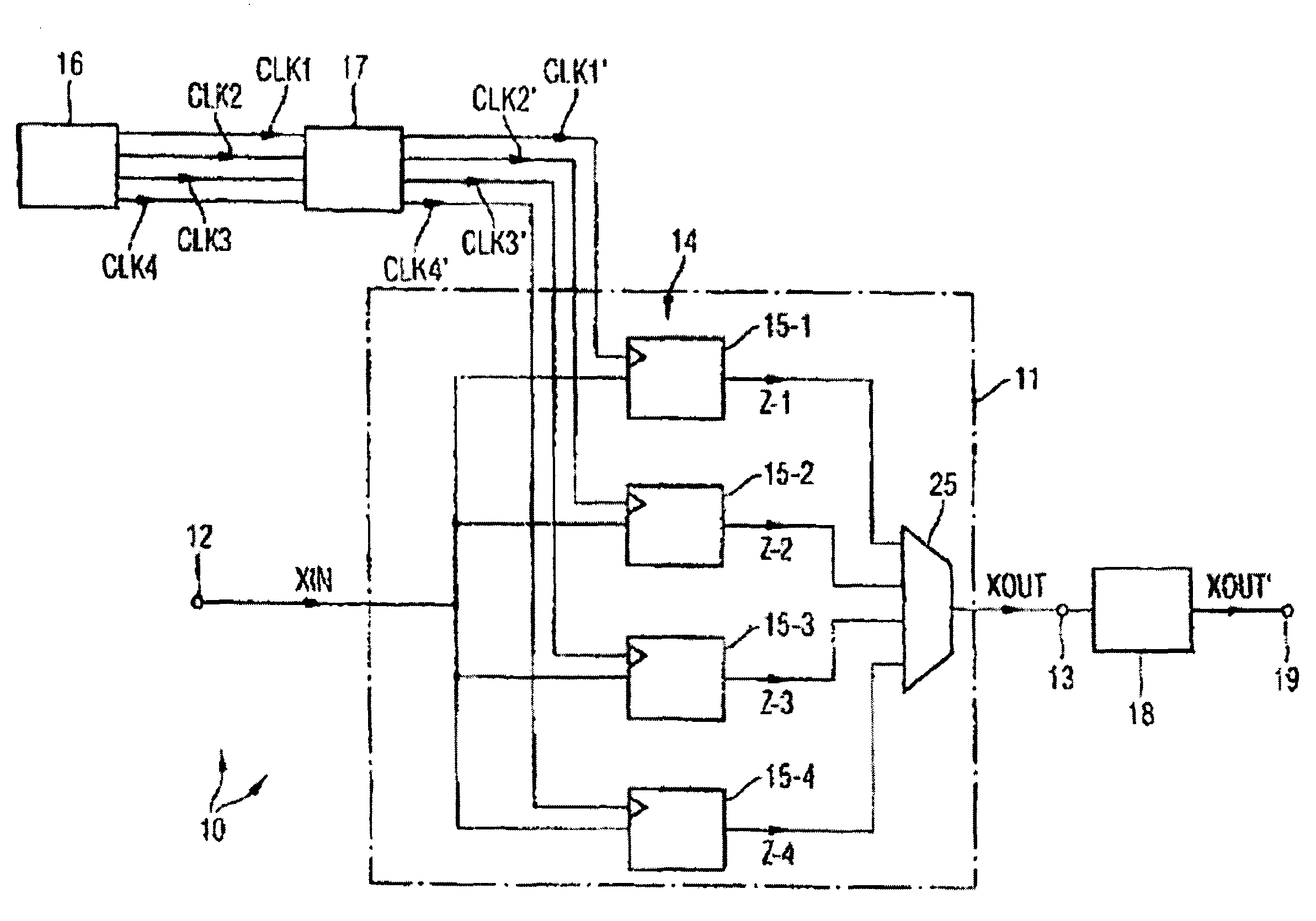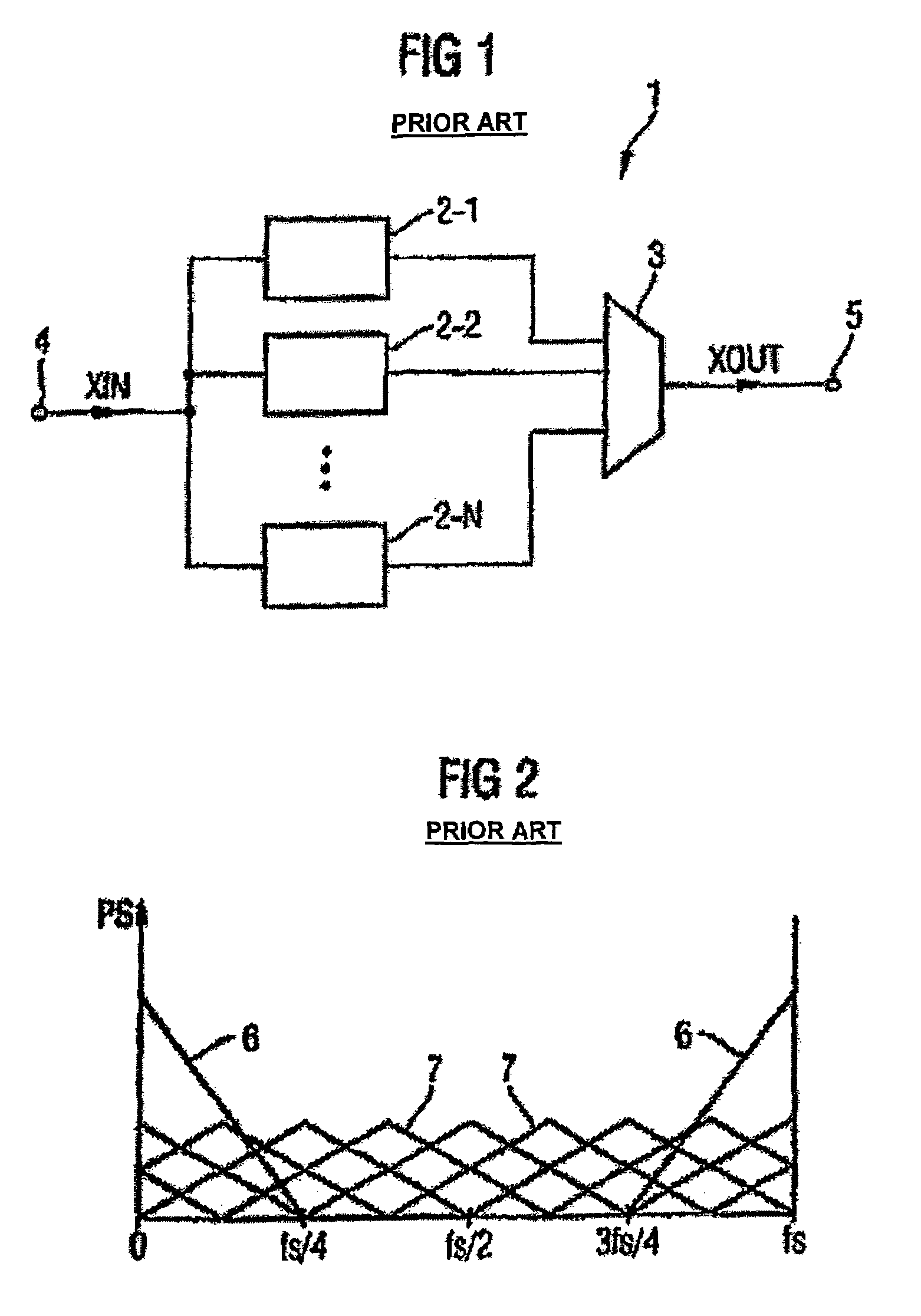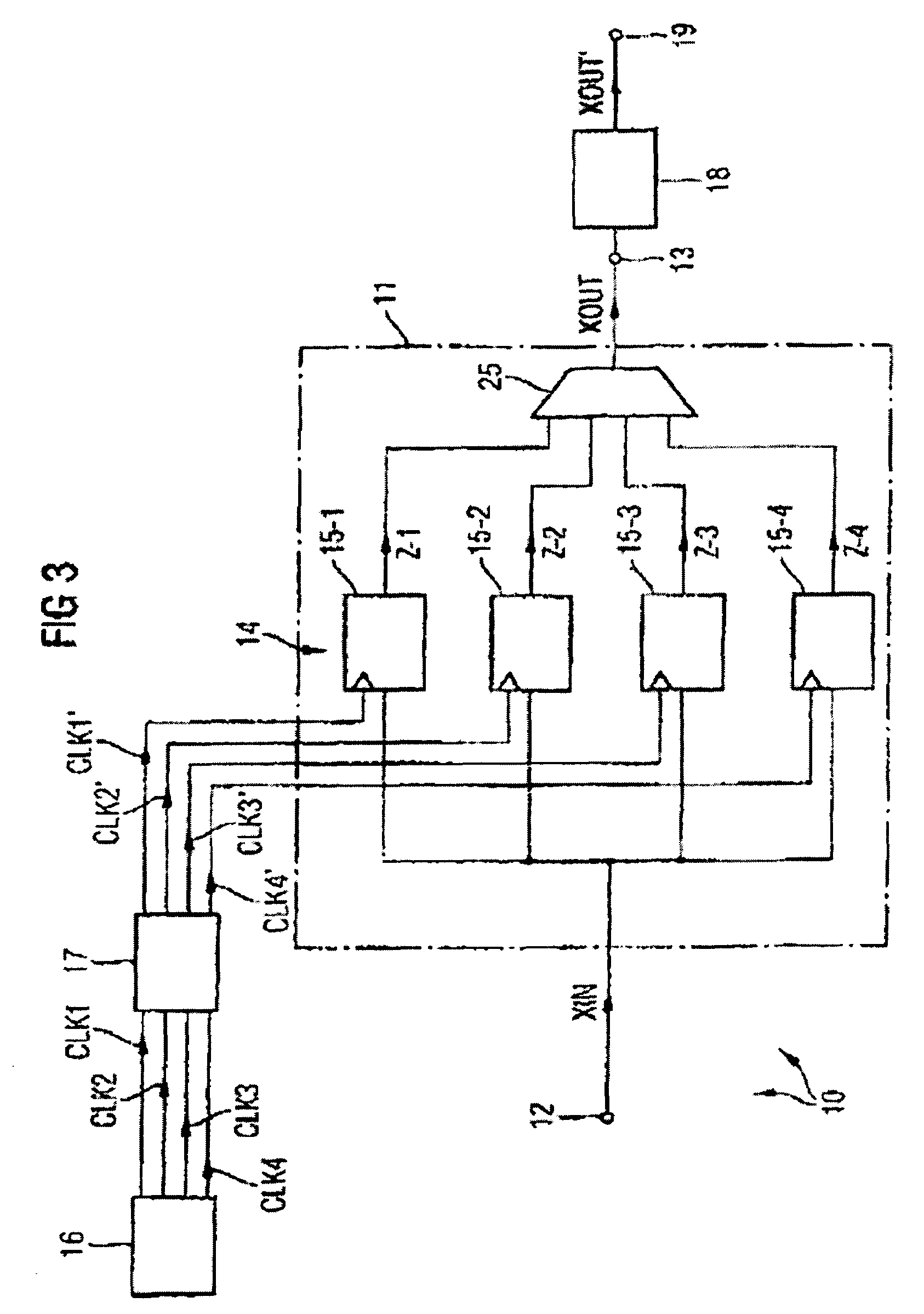Analog-to-digital converter operable with staggered timing
an analog-to-digital converter and time-interleave technology, applied in the field of time-interleaved analog-to-digital converters, can solve the problems of affecting the xout of the conversion error, the increase in the number of time offset problems, and the inability to adjust the output spectrum correctly, so as to reduce the incorrect adaptation of the output spectrum and reduce the level of circuit complexity. , the effect of low additional cos
- Summary
- Abstract
- Description
- Claims
- Application Information
AI Technical Summary
Benefits of technology
Problems solved by technology
Method used
Image
Examples
Embodiment Construction
[0054]Identical or functionally identical elements and signals are referred to with the same reference symbols in the figures of the drawing unless stated otherwise.
[0055]In FIG. 3, the circuit arrangement according to the invention is referred to by reference symbol 10. The circuit arrangement 10 contains a time interleaved analog-to-digital converter 11 which is connected at the input side to an input terminal 12 and at the output side to an output terminal 13. The analog-to-digital converter 11 has a converter array 14 which is composed in the present exemplary embodiment of four individual analog-to-digital converters 15-1 to 15-4 which are also referred to below as ADC channels 15-1 to 15-4. In FIG. 3, N=4 is therefore true. The individual analog-to-digital / convertors 15-1 to 15-4 are arranged in parallel with one another in the present exemplary embodiment, that is to say they are each connected at the input ends to the input 12 and at the output ends to the output 13 via a mu...
PUM
 Login to View More
Login to View More Abstract
Description
Claims
Application Information
 Login to View More
Login to View More - R&D
- Intellectual Property
- Life Sciences
- Materials
- Tech Scout
- Unparalleled Data Quality
- Higher Quality Content
- 60% Fewer Hallucinations
Browse by: Latest US Patents, China's latest patents, Technical Efficacy Thesaurus, Application Domain, Technology Topic, Popular Technical Reports.
© 2025 PatSnap. All rights reserved.Legal|Privacy policy|Modern Slavery Act Transparency Statement|Sitemap|About US| Contact US: help@patsnap.com



